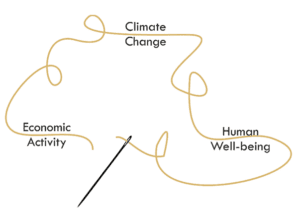In my day job I come across the processes, tools and templates for firms from various sectors and industries, all trying to embed sustainability into their procurement process. One of the common problems they all have (to a greater or lesser degree) is that they’ve got mice!
Companies start out with a great sustainability visions, policy statements and start to flow that down into their tender processes, and then somewhere along the way, they forget to actually incorporate it into their supplier contracts. That is one kind of mouse….one that has eaten the Golden Thread.
Sustainability criteria and KPIs that are asked of in the tender process, but not written into contracts are not legally or contractually binding on your supply chain to deliver. If you have made the effort to prioritise your risks and opportunities and develop SMART objectives and KPIs around it, ensure that you have captured it in the scope of your contract for the supply chain to deliver on.

The other kind of mouse is when the focus is on just one pillar of sustainability (either social, economic, or environmental). This could be for many reasons – the identified critical risks lie within that one pillar or, lack of time and resource has meant that a firm has to focus efforts on the issues at hand and put the rest on the back burner. Not thinking triple bottom line – people, planet, and profit, can soon become an issue.
For example, last year a local authority placed traffic restrictions on a 200 meter lane in West London. What was the reason for their decision? So that pedestrians could pass each other safely and to reduce air pollution. It seemed reasonable at the time.
After all, this lane has shops selling various goods, has links to four medical practices and two schools. The impact of lockdown left shop owners with a 70% drop in footfall (incl. local community, SMEs, and family owned micro-enterprises). They were fighting for their livelihood. Doctors were not able to attend house calls. Parents were spending over an hour to drop off their children to school. The lane restrictions meant traffic congestion elsewhere locally was increasing vehicle emissions and degrading air quality.
It takes careful planning, surveying, and a viability check before we make a sustainable decision.
My advice is to think from every angle, engage with stakeholders, and make the relevant people part of your decision.
Achieving a balance between the three is tricky but if we make informed choices, we can mitigate the negative impacts of our ‘sustainable’ decisions.
Action Sustainability can provide strategic advice and tactical support on your sustainable procurement needs. For more information on how we can support you, please contact Mel @ mellita@actionsustainability.com

Mellita D’Silva
Sustainable Procurement Consultant
mellita@actionsustainability.com

This was posted in All Topics, Energy & Carbon, ISO 20400 Sustainable Procurement
Our Head of Climate, Dr James Cadman, shares his insights on how organisations can effectively embed carbon reduction into their sustainable procurement practices using the ISO 20400 framework.
Read Article
This was posted in ISO 20400 Sustainable Procurement
Addressing procurement barriers is essential for harnessing the full potential of SMEs in the UK. Consultant, Sarah Chatfield explores the barriers to procurement which SMEs in the UK face and the vital role they play within the economy.
Read Article
This was posted in Energy & Carbon, ISO 20400 Sustainable Procurement
Developed by Action Sustainability, "Responsible Sourcing of HVO – A Comprehensive Guide" explores how to responsibly procure Hydrotreated Vegetable Oil (HVO).
Read Article